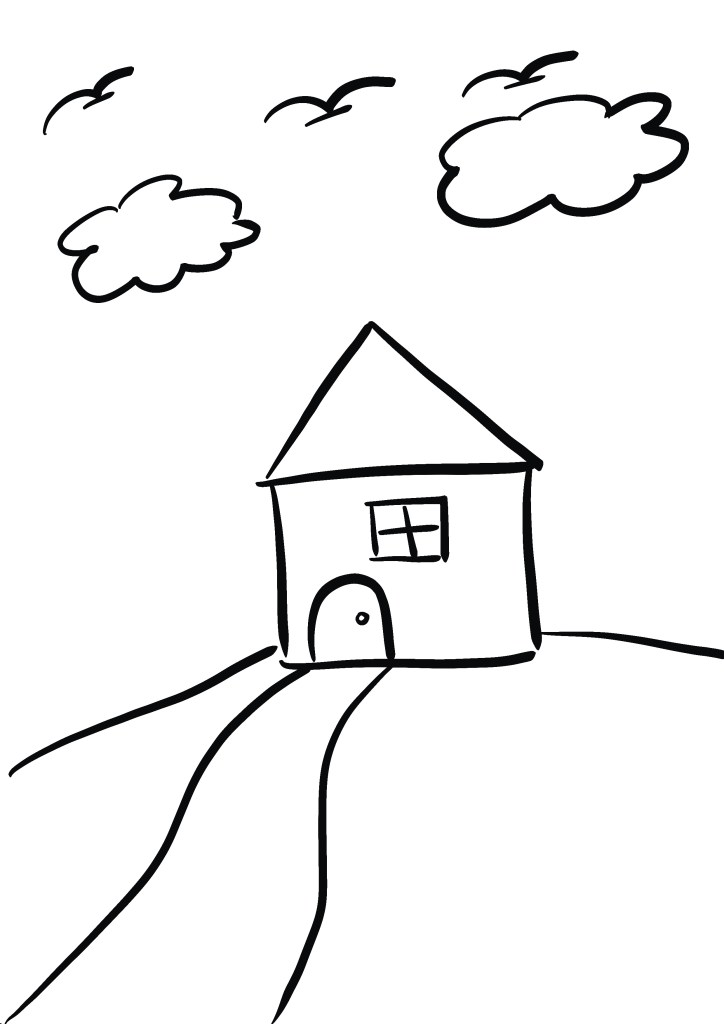If I told you that we all are living in some kind of delusion to differing degrees at any one point in time, would you believe me?
The reality is, each one of us lives in the world of our mind and its perceptions of our personal histories, situations and events; this narrative we build in our minds encompasses stories we tell ourselves about people, and our relationships with them. We make sense of the world and the objects in them through the way we think about them; the bad news is that our minds often trick us.
Yet, Mother nature has her reasons for allowing humans to evolve the way we did. If we lived completely free of delusions, we would either want to end our lives, (just because our brains could not take the painful realities we would need to face up to) or we would be unable to survive and adapt to our environment.
Either way, let me unpack this rather intriguing concept.
Our brains are designed to be efficient, so we expend the least possible energy in making decisions. This is a practical evolution: we make many decisions every single day, so if we had to deliberate over every single decision we would be left completely incapacitated and overwhelmed.
In his book Thinking, Fast and Slow, Daniel Kahneman states that we reason at two speeds: System 1 (fast) which relies on heuristics (or rules of thumb). You make decisions on the spur of the moment with broad strokes, relying on rules of thumb and generalities. This is a rather shallow approach to thinking, but it is the level at which we function most of the time, because it saves us time and energy and is adapted for the hectic pace of life many of us move at. However, the quality of the decisions we make are poor.
Such poor decision making affects our society in profound ways: a 2011 analysis of a thousand decisions made by eight Israeli magistrates revealed that their decisions were contingent on their blood sugar levels.
After a lunch break, or even a short recess, magistrates approved 65 percent of parole applications and gradually became less forgiving until they turned down practically everything. This pattern repeated itself following the next recess where their approval of parole applications went back up to 65 percent. This pattern of behavior was consistent throughout the course of the study. While these poor decisions may not affect those who make them, it has profound implications for the justice system in Israel, the prisoners petitioning for parole and the future of their families.
System 2 (slow) offers a more powerful, precise, and subtle, way of making sense of the world. It is capable of flights of mental gymnastics. It focuses, pauses, and proceeds at a slow pace. It burns up great amounts of energy, and takes a lot more time, but the quality of this sort of thinking is higher and much more precise, so if you are trying to make an important decision it is best to rely on System 2 thinking, even if it costs you more time and energy.
Even then, you almost never come close to pure logic and rationality. Herbert Simon, who won the Nobel Prize in Economics in 1978, suggested that while we are rational creatures, our rationality is riddled with bias and limitations, and counterintuitively, this is precisely what has permitted us to survive as a species.
As the psychologist Jean-Francois Marmion states, “If our ancestors had assumed the pose of Rodin’s The Thinker every time they had to decide whether to flee a predator or an enemy, humanity would have become extinct a long time ago. It was necessary for System 1, however flawed, to exist.”
Another strong precursor for flawed reasoning is the drive to conform. The social psychologist Solomon Asch has demonstrated that the impulse to conformity leads us to deny our own perceptions. If you are the only one in the group who recognises that two lines are of the same length, you are likely to go with the group’s perception rather than maintain your own for the fear of appearing crazy or wrong-headed.
If you think this is a purely rational decision and that your actual perception remains unmoved, but is merely kept private, consider this same experiment that Gregory Berns, of Emory University in Atlanta, repeated using MRI scans.
He found that when the brain itself refuses to accept external evidence, the neural area that comes into play is not the specialised section that deals with cognitive conflicts, it is the part that controls spatial perception.
In other words, other people’s judgements transforms our perception of lines. The error is not merely due to superficial thinking, it literally distorts our vision.
How does this happen? It happens because of the need to resolve cognitive dissonance: the mental discomfort that results from holding two conflicting beliefs, values, or attitudes. Our brain is amazing, but it is also lazy, so the easiest way to resolve the difference between our perception and that of the group’s, as well as our intrinsic need to feel a sense of personal integrity i.e. that we are not liars, is for our brain to trick itself into thinking that the two lines are the not same length as everyone else is saying when in fact they are.
In case you are still not quite convinced of the veracity of this claim, I will share with you personally how I found my own brain to be full of biases in the perception of spatial relations and lines. It started last year when I took up drawing.
I was working in a motion graphic company as a Creative Project Manager and had to get hands on with a project as we were short-staffed. I decided to take it as a challenge to improve my drawing. Subsequently, I did some research on Reddit and saw that the book ‘Drawing on the Right Side of The Brain’ was highly recommended.
The author, Betty Edwards, talks about how we are often unable to draw accurately because our true perception of space, lines and the relationships between them have been hijacked by symbolic thinking, a heuristic pattern of conceptualizing the world that is shaped by words. This system comes into place when we are children as we start to acquire the basics of our native language.
Edwards posits the question, “what prevents a person from seeing things clearly enough to draw them?”
The left hemisphere has no patience with this detailed perception and says, in effect, ‘It’s a chair, I tell you. That’s enough to know. In fact, don’t bother to look at it because I have a ready made symbol for you. Here it is: add a few details if you want, but don’t bother me with this looking business’
This system of symbols comes from childhood which becomes embedded in your memory ready to be pulled out whenever you chose to draw your childhood landscape.
All of us as children have drawn some kind of landscape like this, representative of a home. The windows, roof and rectangular structure of the home are all symbols, not actual reflections of reality.”

It is this mental heuristic that dominates our thinking because words have reduced our perceptual understanding of houses to that of “rectangular structures” and windows to that of “squares with crosses on them” and roofs to “pointy triangles” – which makes sense, from a simplistic point of view, but this sort of thinking obscures the reality and form of these objects.
One of the exercises she uses to overcome this mental bias and access the right side of the brain is to turn the reference picture upside down when you draw it. This is meant to help you access the right side of the brain more easily, as the logical left side is unable to produce symbols for the upside down picture which looks altogether foreign.
Here is the reference picture:

This is the first time I drew the tiger with the reference picture right side up. As you can see there were many corrections and it was hard for the drawing process to “flow”

This is the 2nd time around I drew the tiger, but with the reference picture upside down. Drawing the tiger upside down “tricked” my logical left brain to cease and desist from ‘fixing’ the ‘problem’ of drawing and allowed my right brain – intuitive, perceiving and in tune with spatial planes and linear relationships to take over.

This time around when I drew there was a natural flow and my drawing and line work was so much more fluid and confident. I was not starting and stopping, neither was I second guessing myself. It is almost as if something took over and did the work for me. I just had to let it happen.
I believe that most of life can be lived in this state of flow. How do we get to it? That is a topic for another day.
But for today, I think it’s enough to recognize that
1) Our brains trick us into accepting false realities because of the mental heuristics it defaults to most of the time.
2) Being aware of this mental pitfall, we can in turn ‘trick’ our brain into embracing reality, so as to work with it instead of against it.
As we ponder all the ways that our brains could be tricking us, here is a little cartoon to enjoy:

Leave a reply to summer with monika Cancel reply